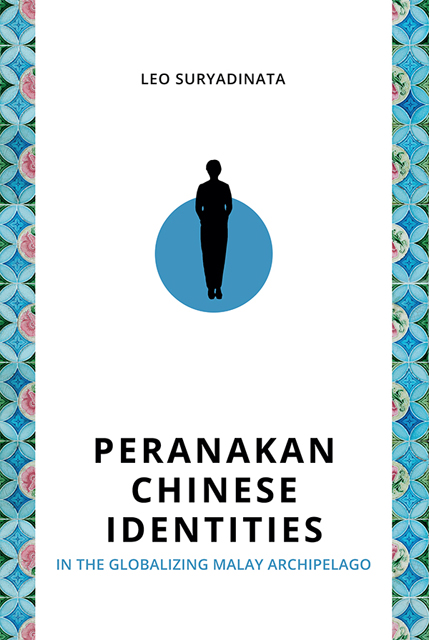Book contents
- Frontmatter
- Contents
- Preface
- Acknowledgements
- Part I Regional Dimensions: Indonesia, Malaysia and Singapore (IMS)
- Part II Focusing on Indonesia
- Appendix 1 The Prospects of the Peranakan Community at the Age of Globalization, by Tan Ta Sen
- Appendix 2 Some Books on the Peranakan Chinese Published between 2007 and 2021
- Bibliography
- Index
- About the Author
3 - Peranakan Chinese Identities in IMS (2): Malaysia and Singapore
Published online by Cambridge University Press: 01 September 2023
- Frontmatter
- Contents
- Preface
- Acknowledgements
- Part I Regional Dimensions: Indonesia, Malaysia and Singapore (IMS)
- Part II Focusing on Indonesia
- Appendix 1 The Prospects of the Peranakan Community at the Age of Globalization, by Tan Ta Sen
- Appendix 2 Some Books on the Peranakan Chinese Published between 2007 and 2021
- Bibliography
- Index
- About the Author
Summary
In recent years, there have been more studies on the ethnic Chinese, especially with regard to their identities. There are a few in-depth studies on the Peranakan Chinese in Malacca (by Tan Chee Beng), Penang (by Ho Eng Seng), and Singapore (by Jurgen Rudolph). These studies are significant and have thrown new light on these Chinese. Tan Chee Beng has also done a general study on the Peranakan Chinese beyond the Straits Settlements.
Benefitting from the above studies, this chapter re-examines the Peranakan identities in Singapore and Malaysia, from the colonial era to the present. Was the Peranakan identity a sociocultural identity or a political identity or both? Was it a self-identity or an identity given by others? Were the Peranakan Chinese confined to the British Straits Settlements? The chapter also discusses the life experiences of the Peranakan Chinese after independence, what the present Peranakan identities are and what the future holds for them.
It is generally known that the ethnic Chinese in Singapore and Malaysia are heterogeneous. One of these groups, known as the Peranakan Chinese or Cina Peranakan, is also known as “Straits Chinese”, “Straitsborn Chinese”, and Baba (male Peranakan Chinese) and Nyonya (female Peranakan Chinese).
It should be pointed out that the earliest term used to call the local Malay and English-speaking Chinese was Straits Chinese or Straits-born Chinese. The term Baba also has early currency among this community, while the term peranakan came into use only in the twentieth century, especially after World War II.
Nowadays, Straits Chinese and Straits-born Chinese are used in the historical context, but Baba remains quite popular. Some writers and the Peranakans themselves use Peranakan and Baba interchangeably, but in fact they are not identical. For a detailed discussion on various definitions of these terms, see the previous chapter.
Typical Peranakan or Baba?
We often assume that the Peranakan or Baba in Malaysia constitute a homogeneous group. In reality, the Peranakan or Baba are heterogeneous. There is no typical Peranakan or Baba. Peranakan Chinese/Baba can be considered as a spectrum ranging from those who are most Malaynized (“localized”, as Tan Chee Beng calls it) to the least Malaynized. While the Penang Baba are the least Malaynized, the Malacca Baba are the most Malaynized. Malaynization involves the use of the Malay language and the adoption of Malay dress and cuisine.
- Type
- Chapter
- Information
- Publisher: ISEAS–Yusof Ishak InstituteFirst published in: 2023

